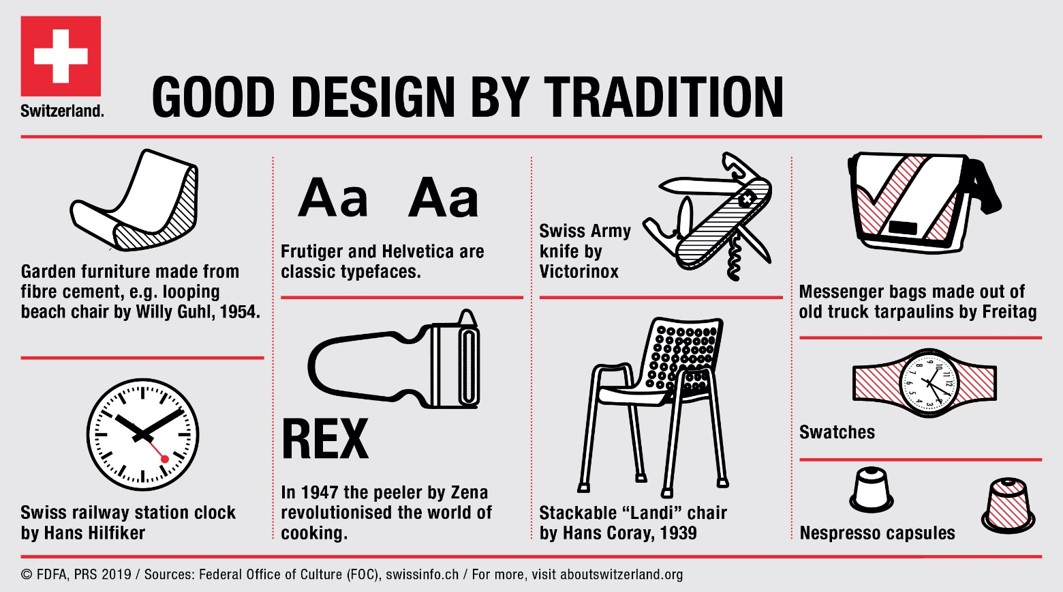SWISS DESIGN MAP SEOUL / SWISS DESIGN TALKS
Switzerland has a reputation for meticulousness in design but also for its simplicity, beauty, functionality and usefulness.
Switzerland is the first nation in the world to have commissioned a graphic artist (Roger Pfund) to design its passports. This strong emphasis on design doesn’t come as a surprise when one learns of how the Swiss view the role of design.

Switzerland is a melting pot of different cultures. Four languages – (Swiss-) German, French, Italian, and Romansh – are the national languages and different regions speak different languages. Each region has their own unique culture, so simple and clear visual communication was necessary to deliver clear information. Design had to communicate not only across languages and cultures, but also across the urban and the rural, the social classes, and across the varying levels of political inclination. Graphic design was bound to advance in Switzerland.
The origin of Swiss design goes back to the 1920s with design pioneers such as Richard Paul Lohse and Max Bill who were followed by graphic designers such as Carlo L. Vivarelli and Josef Muller-Brockmann in the 1950s. The heyday of Swiss design was in the mid-1960s. Originally influenced by the Bauhaus style in Germany, Switzerland quickly set itself apart with a clear and distinct design style that was internationally recognized and adapted.
One of the world’s most-used and recognizable font, Helvetica, has its roots in Switzerland. The ubiquitously used sans-serif typefaces Univers and Helvetica are respectively created by Swiss designers Adrian Frutiger in 1954 and by Max Miedinger in 1957. From airports to public transportations, signages to documents, these fonts have been widely used across the world and Swiss typography made a lasting mark in the history of design.
Architect Le Corbusier was born in Switzerland and has left a lasting trace in the history of architecture, pioneering what is now known as modern architecture. Engineer and designer Hans Hilfiker designed the iconic Swiss railway clock and standardized the dimensions for kitchen components whereas furniture designer Hans Coray, best known for his 1938 Landi chair, pioneered in the field of industrial design. Of course there are many more names such as Jan Tschichold, Armin Hofmann, Peter Zumthor, Mario Botta Herzog & de Meuron and the list goes on.
Switzerland used to be a country of farmers who needed things to be well-made and functional. This requirement for functionality has certainly influenced the style of design. While it seeks to be original, the beauty of Swiss design often lies in its simplicity. Who would have thought that the Swiss watch industry in a downturn would be revived by the popularity of a plastic watch (Swatch)? Coffees packed in aluminum capsules would become a global success (Nespresso)? And bags created out of recycled truck tarps (Freitag) would become a synonym for “hipster”? These Swiss brands each represent a value that Swiss design stands for – simplicity, functionality, and sustainability.
Design in Switzerland is considered to be part of culture, of functionality to suit the purpose in order to make life easier for people. Swiss designers see themselves as communicators, not artists. The purpose of their creations and services lies in seeking practical solutions to everyday problems.